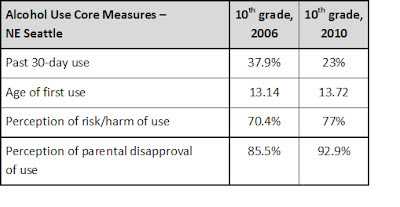54, Avenue Félix FAURE,
75015, Paris
Tél : 01 45 54 13 91
Tél : 01 45 54 13 91
Webiste: "Axuria"
Hours: 7 jours sur 7 de 12h à 14h30
et de 19h à 23h
et de 19h à 23h
Rating Standards: 5-Stars = Extraordinary; 4-Stars = Excellent; 3-Stars = Average; 2-Stars = Fair; 1-Star = Poor
€ = Inexpensive: 30€ and under; €€ = Moderate: 31€-49€; €€€ = Expensive: €50 -75; $$$$ = Very Expensive: more than €76 (prices based on plats--main course)
1-Bell = Pleasantly quiet (less than 65 decibels); 2-Bells = Can talk easily (65-70); 3-Bells = Talking normally gets difficult (70-75); 4-Bells = Can talk only in raised voices (75-80); BOMB = Too noisy for normal conversation (80+)
4 - Star........................................................€€..............................................................2 - Bell
Axuria, which means milk fed lamb, is a restaurant not too far from where we live. A friend called last minute and asked if could join her for dinner. Never one to turn down a dinner invitation we said, "bien sûr" (of course). We had heard of the restaurant and we were able to make reservations on the same day. I was surprised, but then I remembered it was election night, and also a Sunday, so not a typical dining evening.
We got to the restaurant, and the waiter/maitre’d answered the door and greeted us very warmly. Our friend was already at the table. We had a very nice table along the window, and the restaurant was maybe a third full. It has a very nice interior, nicely laid out with a very cooling blue color palate.
Almost immediately we got an amuse bouche of chorizo sausages and puff pastry cheese sticks. I was surprised the chorizo had very little kick to it, and the cheese sticks were nothing special.
We were going to get apéros, but had decided just to get a half a bottle each of the Isabelle et Pierre Clément Châtenoy red and white. We loved the wines, since I’m not a wine connoisseur all I can tell you was that the white was a tad dry, but not as dry as a sancerre, loved it. And, my companions thought the red wine dry and robust, it was a hit as well.
Much to our surprise and delight, we got another amuse bouche, this time it was a little creamy soup of leeks, celery and green onions, with a sprinkling of a little olive oil. We loved this dish. Rather than be dainty, I drank it and practically licked the bowl. I could’ve had that as a main course for sure.
Entrées:
Our friend ordered the “Ravioli de truffes noires court-bouillon et sa crème parfumée” (Ravioli of black truffle broth and flavored cream). Just a little aside, our friend is Italian, so she knows ravioli. She raved that it was delicious, especially the sauce. Not wanting to dig into the ravioli, I asked if I could sop up some of sauce with my bread. It was delicious. Extremely tasty, or as they say in French, “Beaucoup de goût” lots of flavor.
“Coeur de scarole braisée farcie aux huitres fines de claires marennes d'Oléron cuit en cocotte, laqué” (Escarole stuffed with oysters fine clear Marennes d’Oléron broth). This was a stuffed escarole with oysters. This dish was delicious. I wasn’t as polite and asked my companion if I could taste it. Yum, yum. This dish wasn’t as creamy as the ravioli, but was not a shy dish, you could taste the oysters, and the accompanying broth was delightful. It had a punch of flavors.
I ordered the “Pâte artisinale aux queues de langoustines, consummé d'épices et feuille de citron kaffir” (A dough stuffed with langoustines, broth of spices and kaffir lime leaf). This was probably the most refined of all the entrées we had. Basically, it was akin to a wonton stuffed with langostines. Normally kaffir leafs are used in Southeast Asian curries, but in this dish the citrusy element was quite mild and not overwhelming. It was a good, solid dish, again very refined.
Plats:
Our Italian friend ordered the Parmentier de cochon Iberique braisé, sarriette (Braised Iberian savory pork pie). I’m not a big fan of “parmentier” which is akin to a sheppards pie, oftentimes it’s folded into the mashed potatoes, in this case it was all meat and then a layer of potatoes on top. I thought the pulled pork was a bit stringy, our friend thought it was OK, but I would definitely not order something that is typically made in a French home. It was not a complicated nor a sophisticated dish.
Cabillaud with a foam cream and variety of vegetables. The dish was flavorful, and my companion enjoyed that the dish was accompanied with various vegetables which is a rarity in most French restaurants, unless you’re ordering a salad as a plat, and contrary to popular belief, French fries don’t count.
I had the “Braisée traver de Porc” (braised pork ribs). These spare ribs are nothing like the typical spare ribs you get in US. They were slowly braised in a rich wine sauce and the meat literally fell off the bone. I loved the dish because it was rich in flavor. Surprisingly, it was served with a side of haricot vert, carrots, squash,some potatoes and mushrooms. That was quite a nice accompaniment.
Desserts:
Our Italian friend ordered “Craquant de 3 sorbets maison, colis de framboises” (3 crisp sorbets, raspberry parcels), this was basically a trio of sorbets that consisted of raspberry, mango, and lemon accompanied with some sugar crispy wafers. Our friend said it was quite refreshing after a heavy meal.
Originally my companion ordered the “Petit feuilleté chaud de pommes, crème glacée à la vanilla.” Our waiter got it confused, and brought out the “Assiette de fruits frais de saison simplement minute” (Assorted fresh seasonal fruit ). He was about to return it until he saw the plate of fruit and incredible variety, it was too appetizing to return. He liked the fruit and thought it was very fresh. It also had a dollop of mango sorbet
I ordered “Assiette de fromage” (plate of cheese). I have to say, I had quite the variety of cheese. Normally, you get 2 or 3 types of cheese to sample, but this particular dish had 5-cheeses, a nice salad tossed in a mild creamy vinaigrette, accompanied with walnuts and dried apricot. Whoever their cheese vendor is, s/he is a keeper.
After desserts, when we thought all was said and done, much to our surprise and delight, they served us a plate of madeleines as well as little chocolate fudge. At this point, I’m thinking I'm liking this restaurant a lot!
Click here for video of "Axuria"
Summary: Although it's namesake is Axuria (milk fed lamb), I think there was maybe one lamb dish on the menu. Regardless, this restaurant is a winner. Chef Olivier Amostoy is one of the best Chefs in Paris. Our favorite dish was the amuse bouche soup. The only dish we weren’t that excited about was the parmentier, but other than that, everything was a winner. I really don’t want to share this restaurant, since it’s a neighborhood restaurant that I want to start frequenting, but I’m all about sharing. Auxria is a hidden gem, so go before it becomes too popular.
Total bill came to 137€ for 3-people

























































